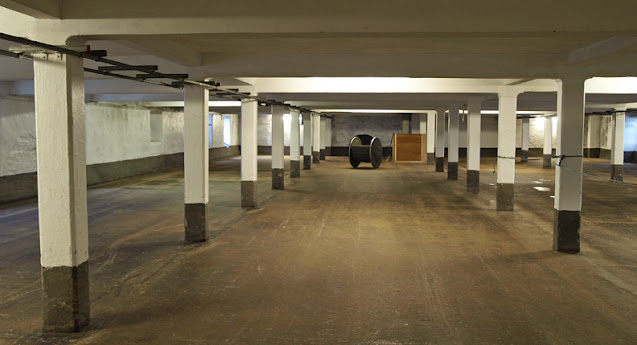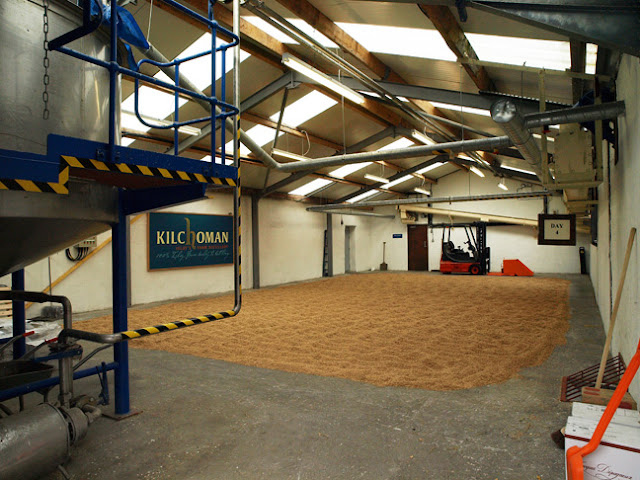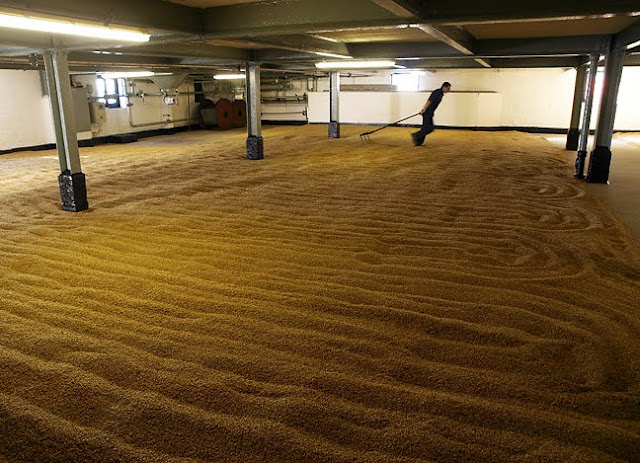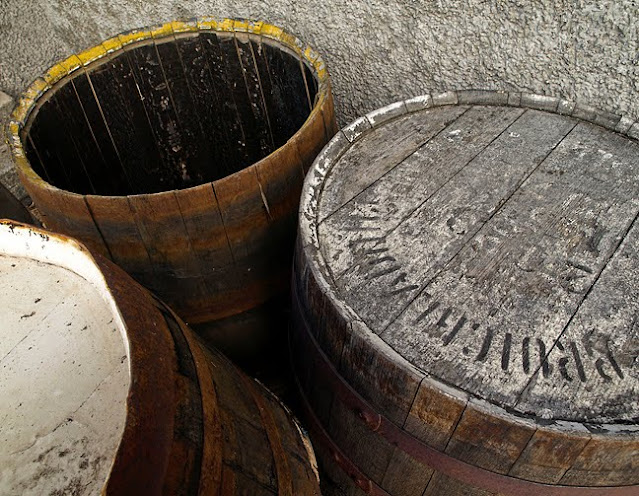I suppose this might be an extension of my last post "serendipity", since many chance encounters are really serendipitous when you think about it.
But first words, RIP dad, whose quaich was finally emptied in October of 2024. He had a good run of 101 years...
Dad and I were peeking through the screened window of the malting floor at Springbank Distillery to see what we could see, being that there were no "tours" of the distillery available in 2001, not unlike many (most?) distilleries at that time. We were about to go our merry way when a head popped out and invited us in. It was the mashman James Muir who had seen us peering through the window. What a thrill to be given a tour by someone who was an intimate part of the process of creating the Springbank malt whisky. He was most gracious in inviting us in and showing us around, the sense of pride in his job being most evident. Unfortunately, the last time I inquired about James I was told he had passed away. RIP to you as well James.
In 2006 we were tootling along the low road from Port Ellen to Bowmore on Islay when I spied some interesting peat cutting action. I'm thinking that usually folks cutting peat do so by themselves, in order to resupply the fires which keep the chill off in their croft homes, so it was somewhat unusual that this scene involved four people, one wielding a large video camera. I was curious, we stopped. It turned out that Iain McArthur from Lagavulin Distillery was demonstrating the backbreaking chore of cutting peat for one Charles MacLean (pre MBE) and being filmed for an episode for Singlemalt TV. At the time I must confess I had no idea of who Charles MacLean was, so we merrily went on our way after taking a few pix, and carried on to Bowmore.
Tormore Distillery was always a favourite of mine to photograph, as it's a distillery with unusual and beautiful architecture. We'd often stop on our way by for me to exercise my camera. In 2011 I was wandering around the distillery taking pictures and another (see Springbank above :)) head popped out and invited me inside. It happened to be Duncan (sorry, I didn't get his last name) who was in charge of the production that day. At the time it only took two people to run the show, but apparently in January of 2012 the computers were to take over and one person would be able to run it all. If you apprecieate anything about whisky production (or any production for that matter) think about that for a moment.
Prior
to a 2011 distillery tour of Ardbeg DistilleryI happened to start chatting with
someone in the washroom, as one does if you want to break the ice as
a male while standing with your face to a blank wall. My "next
door neighbour" Sandy Reid was with a company called Semex, a
global company with expertise in bovine (um, that's cows) genetics.
Don't ask how we got onto the subject, but I shared with him that I
knew Canada had good Holstein stock, so I guess that melted the ice for us both. Later in the bar
downstairs we met again and he invited me to a dram from his flask.
It happened to be a 1964 Black Bowmore. My brush with fame...a
deliciously dark, deep, sweet and complex dram which was about an £80
taste, according to Sandy. Thanks Sandy.
In 2013 I did the "bog off" tour at Ardbeg. I managed to get caught in a power outage during the tasting session and explanation of so-called alligator char in the barrels. I'm not sure many people can boast of experiencing a distillery tour lit by candles. Later after the final tasting session I bumped into Ian Buxton on the pier outside . Again, I didn't know much about his place in the written history of Scotch whisky at the time, but at least I did recognise his name this time around. Apparently, as he told me, he was there with photographer Jason and was doing research on a luxury whisky project for a client. Another brush with history.
Not considering myself a particularly engaging conversationalist (nor as you can see a very prolific blog writer), I don't suppose any of these gentlemen remember our chance encounters. But maybe.
Slàinte





















